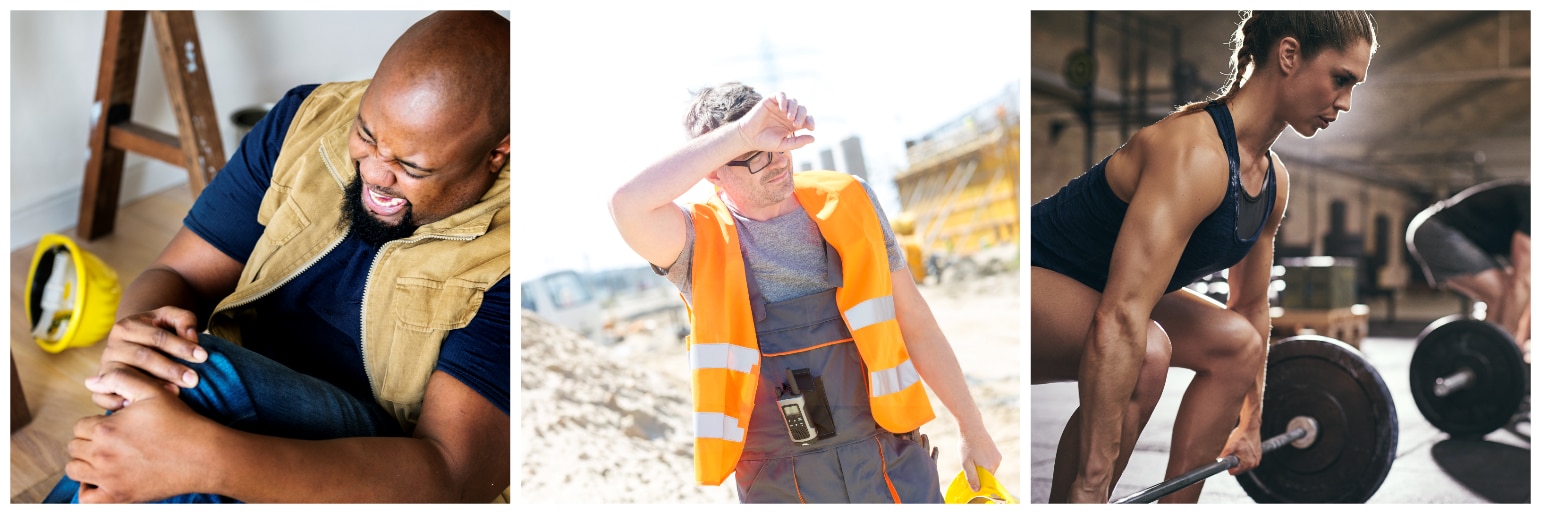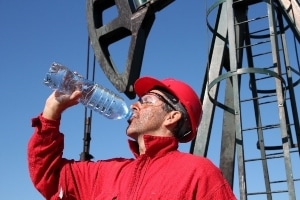Rhabdomyolysis
What is Rhabdo?

Rhabdo can occur from any type of muscle damage. This includes accidents, heat, overuse, or other causes.
Rhabdo is the breakdown of damaged muscle which results in the release of muscle cell contents into the blood. The proteins and electrolytes released into the blood can cause organ damage. Workplace risk factors include heat exposure, physical exertion, and direct trauma (e.g., crush injury from a fall).
Potential Problems due to Rhabdo
Rhabdo can cause many problems, including:
- Kidney damage or kidney failure
- Dangerous heart rhythms (arrhythmias)
- Seizures
- Nausea and vomiting
- Permanent disability
- Death
Muscle damage can also cause a medical condition called compartment syndrome:
- A compartment is a group of muscles bound together by a thin, fibrous sheath or covering.
- Injury to a muscle inside the sheath can cause swelling. The pressure inside the sheath can rise since the sheath cannot stretch very far.
- High pressure inside the sheath can prevent blood from entering to feed the muscles inside.
- When muscles inside the compartment aren’t getting enough blood, they die. This is compartment syndrome.
- Compartment syndrome is not common, but it is important to get immediate medical treatment. Delayed treatment can cause permanent disability as the body cannot replace dead muscle.
Early recognition and treatment can prevent many of these problems!

Dehydration doesn’t cause rhabdo but it can make it worse. Muscle damage releases proteins and electrolytes into the body. Dehydration impairs the body’s ability to get rid of these muscle proteins and electrolytes.
